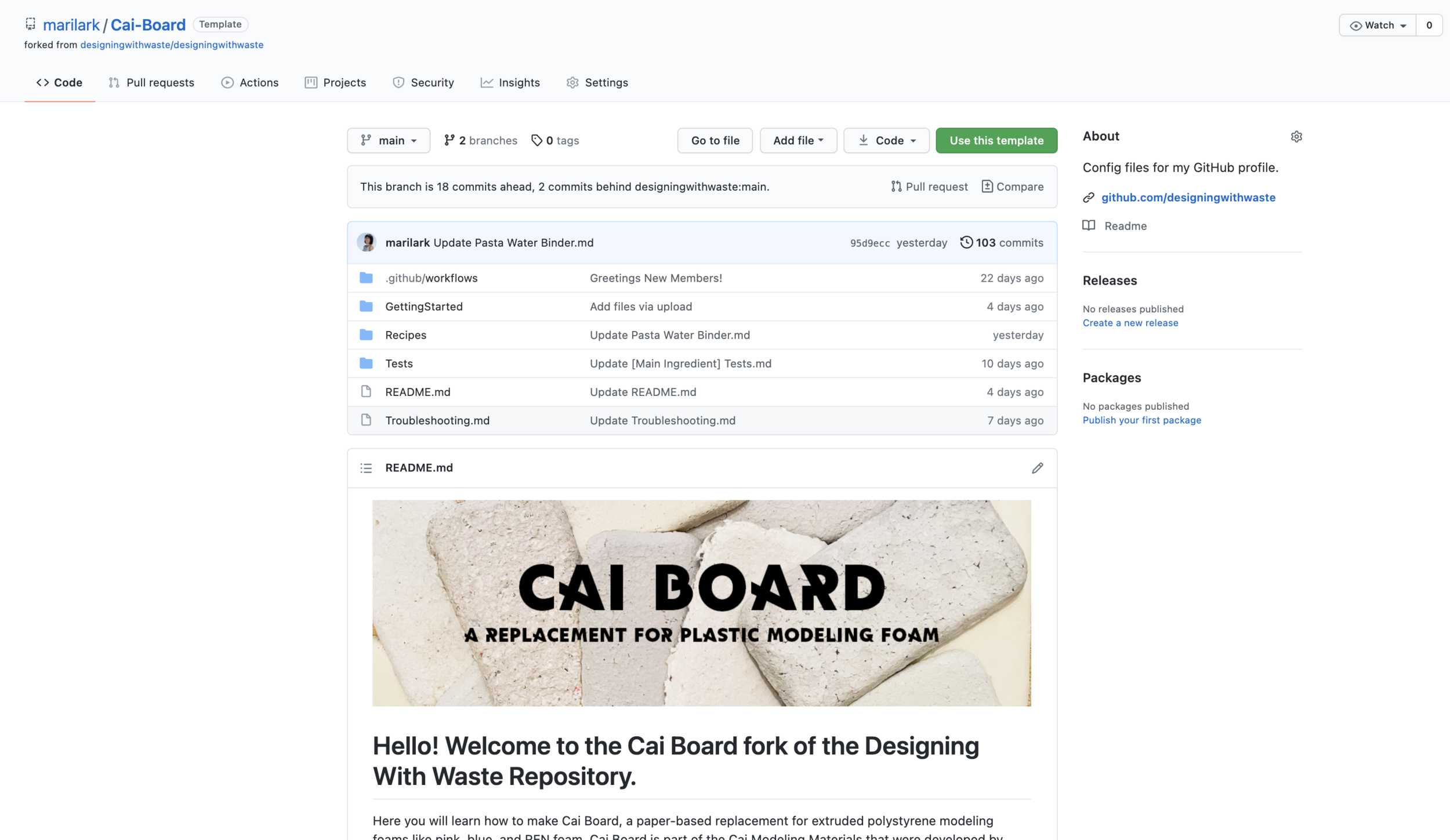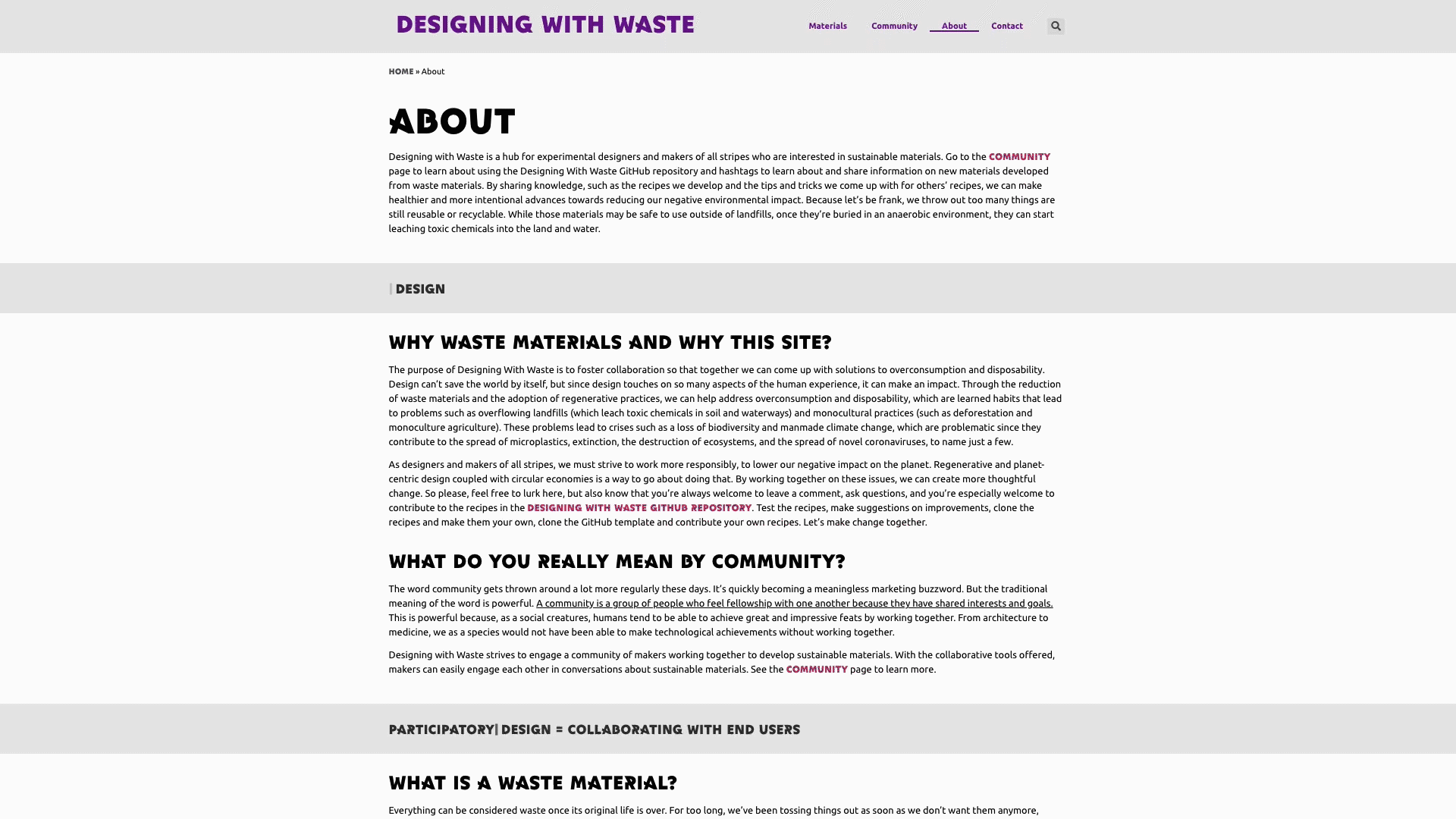Mari Miller
Open Source Collaboration in Experimental Design
This project is based around a set of tools that fosters collaboration in experimental design to help designers and businesses work sustainably. The goal is to show makers how, through personal changes in their creative practice, they can envision larger scale changes to sustainable materials and circular economies. Open source knowledge and collaboration gives access to knowledge that allows both individuals and manufacturers to lessen their negative impact on the planet.
The Problem:
We have designed ourselves into a climate crisis. Underlying the more destructive practices of design and Western society is a mindset of disposability. We have been taught to use things once and throw them away. We see disposable mindsets not only in packaging but in design schools as well, where we use plastic as a standard modeling material. Changes to the discipline of design are not enough to stop the climate crisis, but they can have a broad impact given how design influences so much of everyday life.
Changing our mindsets around disposability needs to start now and it needs to start early in education. A common problem in teaching about the climate crisis is that it’s so big it can feel overwhelming. And so people get anxious, depressed, and do nothing. But research has shown that by first teaching children to appreciate nature in their own backyards, they’re better able to engage with the necessity of saving ecosystems halfway across the planet. If we similarly teach young designers to value the tools of the trade through a sustainable lens, will they feel more empowered to make positive change? Will showing them small ways in which they can reduce waste help them see how they can have even larger impacts?
The Cai Modeling Materials
I have developed prototyping materials called the Cai Modeling Materials using waste paper and plaster. Cai Board can replace modeling foam and Cai Clay is an alternative to plastic-based clays. While makers of the Cai Modeling Materials can personally reduce their carbon footprint by recycling their waste and avoiding using plastic-based modeling materials, the greatest impact lies in students' ability to take the sustainable practices they've learned through engaging with the Cai Modeling Materials and Designing With Waste site to their professional lives.
The materials require binders, with options given for both waste and virgin binders. The standard recipe for Cai Board uses kuzu, a starch made from kudzu, which is an invasive species in the US South. While kuzu made from invasive species is not readily available, beginning conversations on alternative sources for virgin materials is essential if we are to reduce the monocultural practices that led us to the climate crisis, such as an over reliance on plastic, deforestation, and monocrop agriculture.
The materials were developed for prototyping since that area of design often gets overlooked when it comes to switching to less harmful materials. Design schools go through over a 1,000 ft3 of extruded polystyrene foam a year, with many of the models made from that foam getting thrown out at the end of every semester.
With my materials, a student could make a batch of Cai Board or Cai Clay, use it to make their models, then recycle those models into new materials. They will save money (making design more accessible for lower income students), not inhale as many microplastics, put less waste in landfills, and hopefully reduce their ecoanxiety. All while learning more sustainable ways to design that they can bring with them to their professional lives.
To see a Cai Board model being made, click here.
To see Cai Clay being sculpted, click here.
The invention of paper is attributed to Chinese court official Cai Lun in 105 AD. Earlier archaeological examples of paper have been found in China, though little is known about the craft of papermaking prior to Cai Lun. That is why these modeling materials are called Cai Clay and Cai Board, to not just honor the history of paper but to connect prospective paper makers to its millennia-old history. To remind us all that if we want the human race to survive for millennia more, we need to embrace regenerative technologies, be they historical or brand new.
These materials are regenerative because they can be continuously recycled into new materials and even composted in backyard compost piles. Plaster, which is in Cai Clay, can even improve soil conditions. Cai Modeling Materials’ ability to help reduce deforestation while amending soil makes them regenerative.


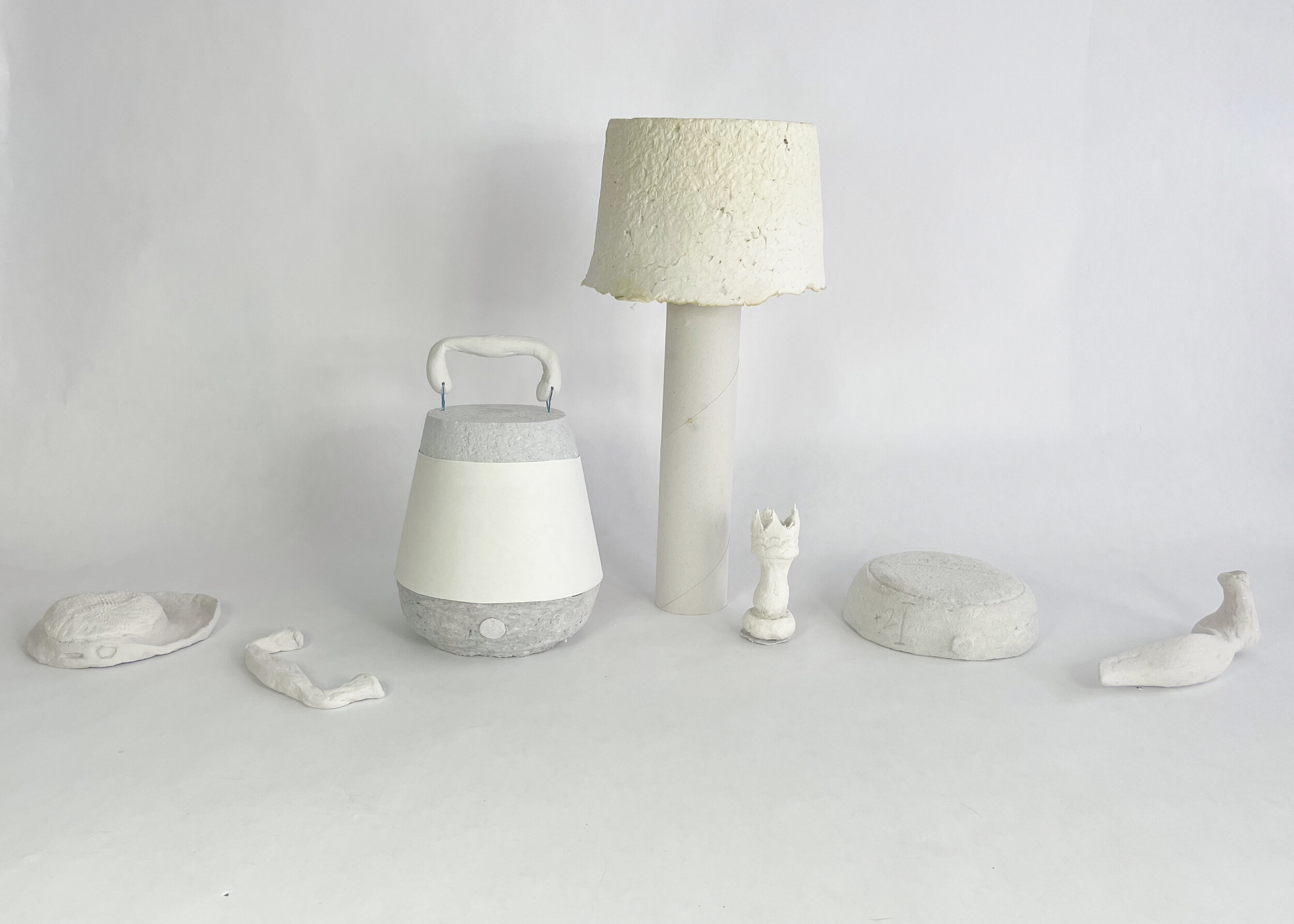

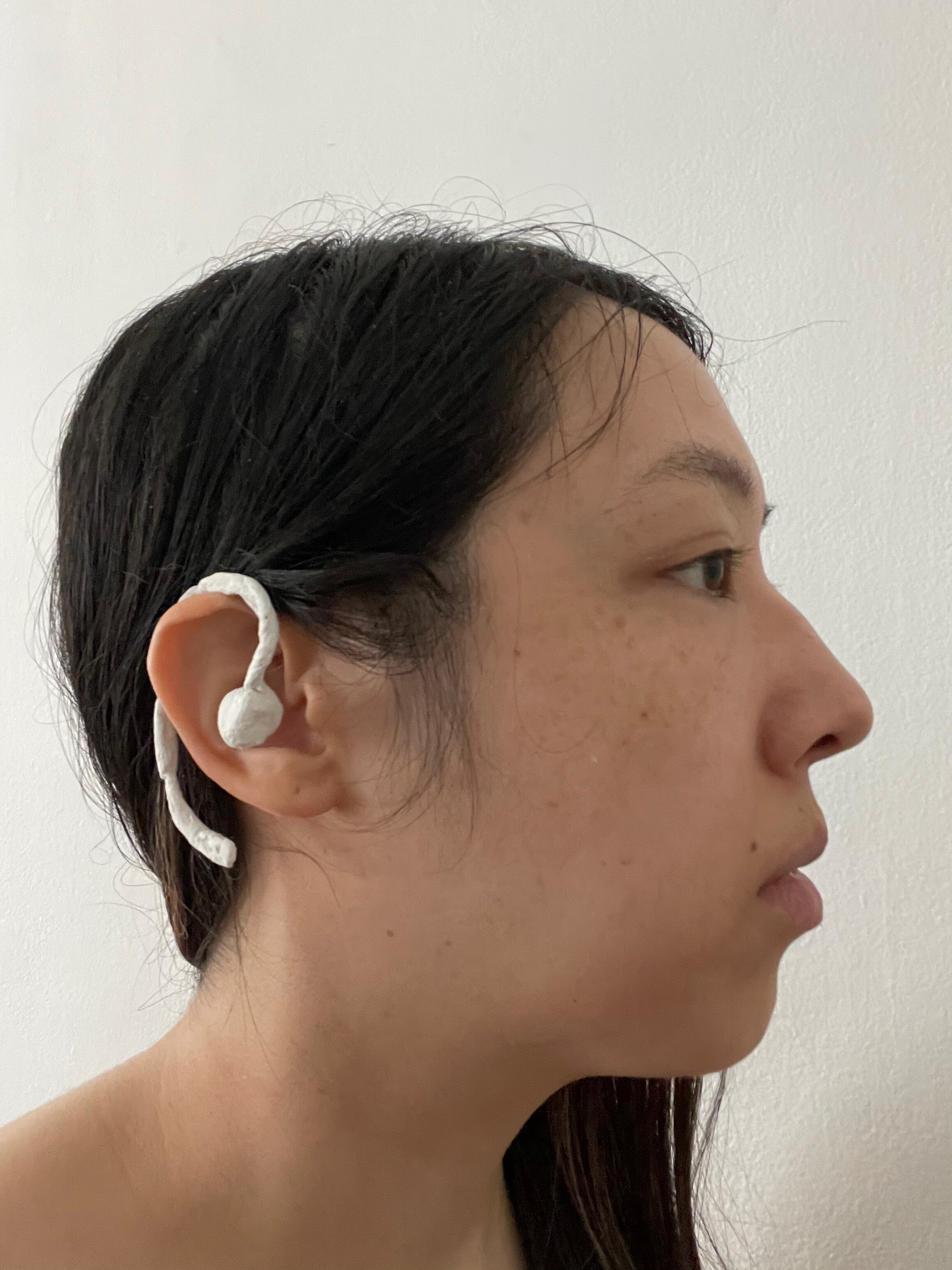
Pasta Water for Designers
The first thing I did to help disseminate information about the Cai Modeling Materials was write a book that details how to make them. The book is titled Pasta Water for Designers and will be released in a PDF format. I came up with the name because home cooks tend to throw out pasta water while chefs save it to thicken and flavor sauces. As designers, we need to be more like chefs who see value in materials we have been taught to see as trash. The book includes tips, tricks, and advice for experimentation. It even includes a recipe for making Cai Board that uses leftover pasta water as a binder.
The book uses two typefaces. The display type, which you see in the title and headers, is called Movement. It was formed by dancers moving their bodies. I chose it because we need to create movement on these issues of sustainability, accessible education, and the free sharing of knowledge. The main typeface, which gets used for the text, is Ubuntu. Ubuntu is a Zulu word and philosophy that means, “I am because we are”. Because of how ubuntu speaks to the power of community, the open source community adopted the name for a distribution of Linux. Considering the deeper meaning of the word and the aspects of my project that borrow from open source ideas and practices, this typeface in particular seemed appropriate.
Pasta Water for Designers contains two types of recipe sections. The first type of section, the Basic Recipes section, walks readers through the making process step-by-step with illustrations. The second type of sections are the Guidelines sections. These sections provide general instructions and photographs to illustrate the main steps. Immediately following the guidelines are sets of recipes tailored for experimentation. So the two sections are different not just because one holds the reader’s hand while the other focuses on experimenting with the recipes, but because I hope that the different formats will help reach readers who have different learning styles.

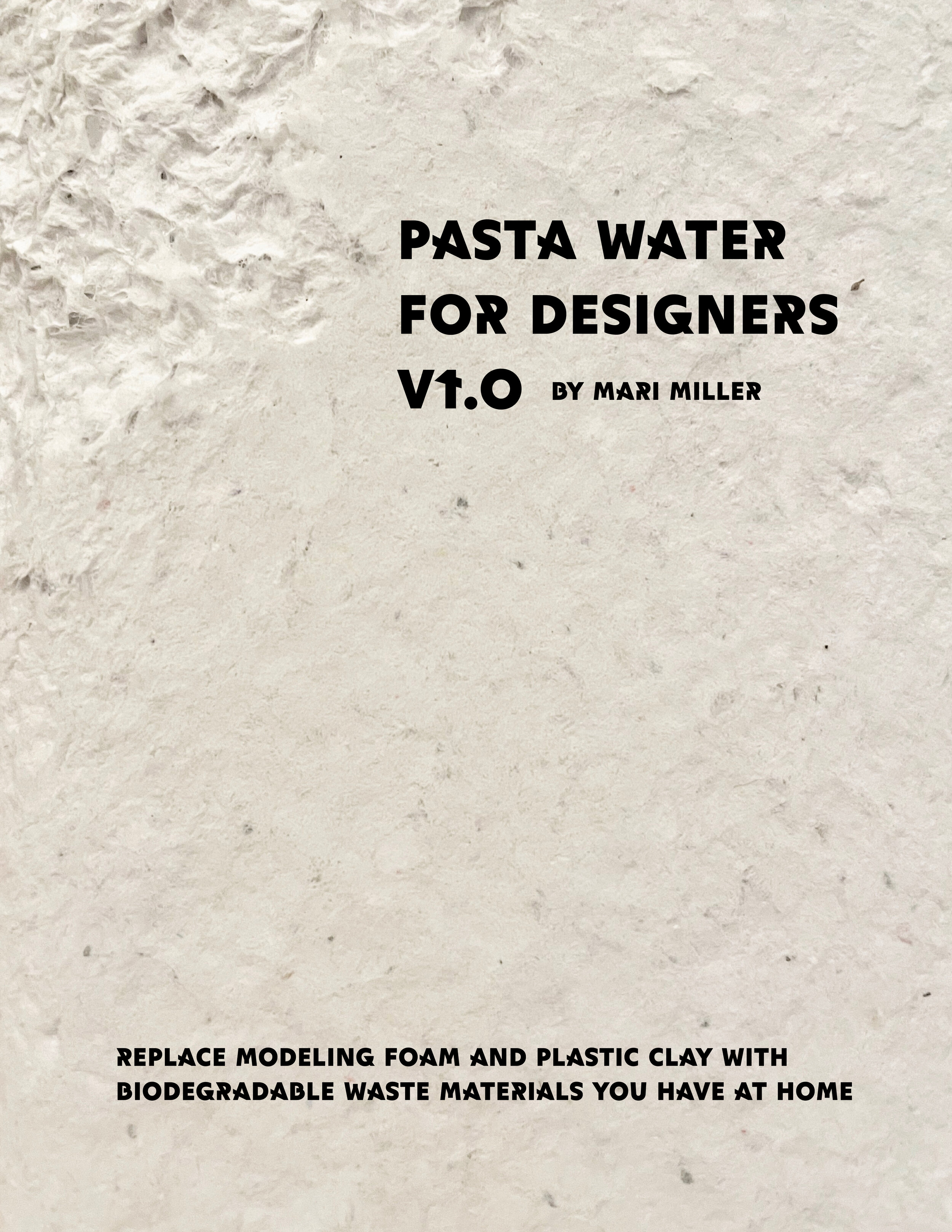
Designing with Waste
The power of community lies in communication. Not just in someone reading what I’ve written, but in people being able to discuss what they're working on while growing their knowledge together. So I created DesigningWithWaste.com. Much of the impetus for this site grew out of frustrations with seeing awesome experimental design projects never go beyond a classroom because of lack of infrastructure. Making matters worse, students often have to reinvent the wheel when they have an experimental design project since the industrial design community lacks a collaborative hub where people can improve upon each others’ recipes.
DesigningWithWaste.com has a minimal color palette and aesthetic because I wanted to leave space for makers to see how these materials could fit into their own practices and aesthetics. Through certain sections of the site, you’ll see little tickers. They flash through some of the theories that led me to this thesis, topics like planet-centric design. These tickers are a manifesto of sorts. Building a community means bringing people together who share common interests or concerns. By having them informally presented, visitors may feel less of a burden since they do not need to sign-on to a manifesto that they may only agree in part to.
We don’t want a lack of access or a lack of knowledge to be a reason people don’t participate in green tech. That’s why I am using the established GitHub platform, which allows fellow experimental designers to suggest improvements or alterations to the Cai recipes and even upload their own recipes. My hope is that this will turn into a truly collaborative space that grows beyond the Cai Modeling Materials. Just like no one material can replace plastic, no one person can solve the climate crisis and plastic problem. Only by working together will we be able to lessen our negative environmental impact. And by building upon each others’ knowledge, we can make more significant advances in sustainable materials more quickly than if we worked alone.
